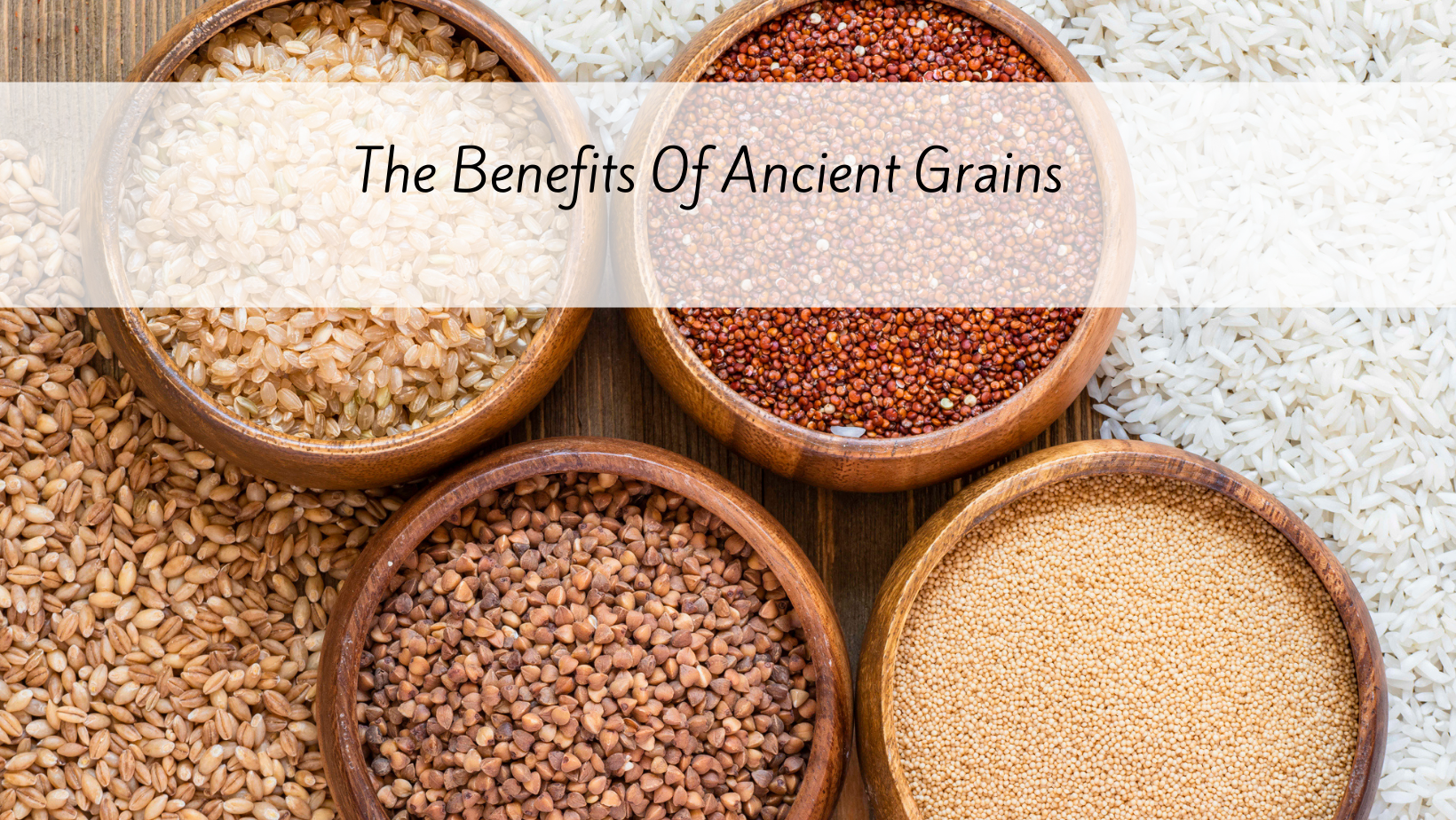The Benefits of Ancient Grains
Part of my food philosophy is the “100-year diet.” This means that if people ate it a hundred years ago, it is probably okay for us to eat it today. Well, today I want to share with you my “1,000-year diet.”
More specifically, the ancient grains that people have been consuming for over 1,000 years. Tried and true, these grains are not just rich in flavor, but blow wheat out of the water in terms of nutrients.
Farro
Farro (also known as emmer) goes back to the times of the Egyptians where it was used in bread making. In its whole grain form, it needs to be soaked overnight due to its extremely high fiber content. If you aren’t a fan of soaking grains, buy semi-pearled farro for speedier cooking.
With its nutty flavor, this grain is a favorite to use in place of rice in a risotto - a “farotto” if you will.
Ratio: 1 cup farro to 2/12 cups water
Uses: soup, pasta, risotto, bread, breakfast cereal, and baked goods.
Quinoa (gluten-free)
Pronounced “keen-wah,” was known as the “mother of all grains” by the Incas. An amazing fact about quinoa is that it can withstand not only frost but also drought conditions. This made it a perfect staple in the Andean diet over 5,000 years ago. Due to its tenacity to survive, quinoa is packed with nutrition.
Not only is it a complete protein, but it is also rich in several nutrients, including calcium and iron.
Ratio: thoroughly rinse first, to wash off its naturally bitter coating. 2 cups water per 1 cup quinoa
Uses: side dish or added to soups or salads
Spelt
Originally grown in Iran around 5000-6000 B.C., spelt is a distant relative of wheat. It contains more protein, fiber, folate, and magnesium. It has a nutty flavor and slightly sweet flavor that tends to work well in baking. Although it does contain gluten, some people who are gluten sensitive report that they can digest spelt.
Ratio: 1 cup spelt to 3 cups water
Uses: baking, breads, pasta, cereal, side dish
Kamut
Kamut is believed to have originated in the time of King Tut. This ancient grain has strong antioxidant properties. Kamut is a distant relative to modern wheat. Known also for its strong antioxidant properties, it makes a powerhouse replacement for rice in a traditional pilaf. It has a natural sweetness, which also makes it a great choice for baking.
Ratio: 3 parts water to one part kamut
Uses for: pilafs, soups, and salads
Amaranth (gluten-free)
Amaranth is a gluten-free grain that was cultivated originally by Aztecs and Incas, and is one of the earliest known food plants. Although categorized as a grain, amaranth is actually a seed, giving it a high protein content of 15 percent. It has a delightful nutty flavor and is easily digestible.
Ratio: 6 cups of water for 1 cup of amaranth
Uses: breakfast cereal, side dish, snack (can be popped like popcorn)
Teff (gluten-free)
Teff’s use dates back thousands of years to ancient civilizations of Ethiopia. Although teff is the world’s smallest grain, don’t be fooled by its size. Much like quinoa, teff is a survivor. It can grow in high altitudes where many crops won’t survive, in water-logged areas, and in draughts. It is the richest grain in calcium content, boasting 123 mg per cup of cooked teff.
Ratio: 1 cup teff to 3 cups water
Uses: baking, soups, and stews
Millet (gluten-free)
Millet is a staple food in China, India, and Africa. It is particularly high in magnesium and is also a good source of protein. It has a nut like flavor and is mildly sweet. Millet is one of my favorite grains for its versatility. It can be prepared creamy like mashed potatoes, or fluffy like rice.
Ratio: 1 cup millet to 2 ½ cups water
Uses: added to soups, as side dish, warm cereal, or in baking as a flour
Buckwheat (gluten-free)
Buckwheat dates back 8,000 years when it was first consumed in the Balkan region of Europe. Hulled Buckwheat grains are known as buckwheat groats, which is the form most buckwheat is found in. Interestingly, buckwheat is not a grain at all, but fruit seeds. The seeds are digested more slowly than other carbohydrates, which means you feel fuller longer after your meal.
Ratio: 1 cup buckwheat to 1.5 cups water
Uses: breakfast cereal and soups. Kasha is a traditional porridge made from Buckwheat groats.
